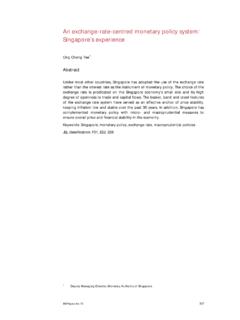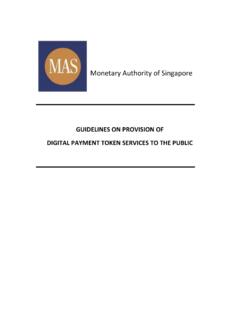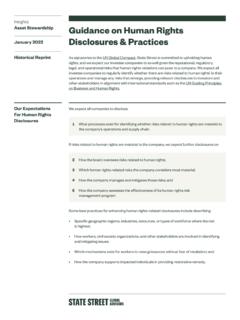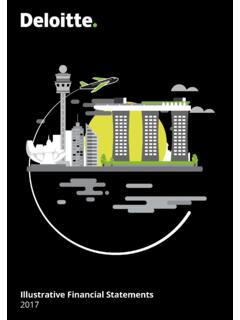Transcription of Are Central Bank Digital Currencies (CBDCs) the money of ...
1 Are Central Bank Digital Currencies (CBDCs) the money of tomorrow? ContentExecutive summary 031. In the beginning, there was money 042. The rise of money digitalization 053. What are the scope and purpose of CBDCs? Retail CBDC model Wholesale CBDC model What are the consequences of these new models? 174. Where do we stand on CBDC deployment so far? 185. Key challenges and regulatory implications of CBDCs 226. How we see the future of CBDCs 242 Are Central Bank Digital Currencies (CBDCs) the money of tomorrow? 3 Are Central Bank Digital Currencies (CBDCs) the money of tomorrow? Central bank Digital Currencies (CBDCs) have undeniably stepped into the limelight and we believe they are here to stay.
2 While the theoretical concept of CBDCs already emerged several years ago, an increasing number of countries and Central banks are now assessing CBDCs in view of putting them into surge in scrutiny is due to a combination of developments in the financial ecosystem, including the recent major shifts in the payment industry, the launch of cryptocurrencies and stablecoins, and the declining use of cash. Each country and jurisdiction is affected in varying degrees by these developments and is appearing to use CBDCs in line with its most pressing issues and policy objectives. For instance, the Swedish Riksbank is focusing on issuing an electronic Krona to provide an alternative state-guaranteed means of payment and to ensure financial stability in case of private market failures.
3 In contrast, the monetary authority of singapore is focusing its efforts on providing faster and cheaper cross-border transactions and foreign currency exchange. These diverging objectives show that CBDCs can be used for different purposes by virtue of their highly versatile and customizable nature. This paper aims to not only present the key principles of CBDCs, but also demonstrate potential CBDC models and how they are currently being assessed by Central banks. We will also highlight the key challenges inherent to CBDCs and express how we see the future of CBDCs. The paper is structured in the following way: Before addressing the concept of CBDCs, it is important to define the purpose of money and the role of the Central bank in the current financial ecosystem.
4 Indeed, the Central banks role in regulating the flow of money in the economy and how their interaction with commercial banks is of the utmost importance, similar to how a heart regulates blood pressure. We address this in chapter 1. Chapters 2 and 3 aim to not only clarify the concept and role of CBDCs but also shed detailed light on the different CBDC models, including several forms of retail and wholesale CBDCs. In addition, we provide a high-level overview of the current regulatory, monetary and technological implications of each model. Chapter 4 is an overview of the various CBDC projects initiated by Central banks. We explain the root causes behind these initiatives and the different models chosen by Central banks to address them.
5 Despite the diverging approaches, we will explore a trend shared by all Central banks. In chapter 5, we present the key CBDC challenges ranging from technological to legal and regulatory considerations. Chapter 6 concludes with Deloitte s point of view on CBDCs and the summaryNo wonder Central banks now want to seize the opportunities of this Digital innovation to power the economy of tomorrow. We would like to extend our special thanks to Nasir Zubairi, CEO of the LHof T, for sharing his perspective with us and enriching the paper with his valuable Central Bank Digital Currencies (CBDCs) the money of tomorrow? money is so deeply entrenched in our economic landscape that it is usually seen as the lifeblood of the economy.
6 The nature of money has constantly evolved over the years from bartering, commodity money , coins, paper money and, most recently, to e- money through dematerialization and digitalization. However, defining money remains a conundrum for monetary theorists; as such, it is more helpful to define the key roles that money plays in society. money usually serves as:1. A store of value, acting as an asset that sustains value over time 2. A medium of exchange to purchase and sell goods and services 3. A unit of account used to price a particular good or service as well as to denominate a certain debtMoney is a special kind of I owe you that is universally trusted. It can take the form of currency printed by a Central bank or deposits that people hold in their commercial bank.
7 In addition, for commercial banks themselves, reserves held in a Central bank represent another form of money . Today, most money is in the form of bills, coins and its electronic equivalent, fiat currency. There is a slight difference between the types of fiat money , such as Central bank money and commercial bank money1. A common misconception is that Central banks create most money . In fact, in a modern economy, money is created by commercial banks making loans and so-called commercial bank money . Central banks can only indirectly affect the amount of money lent to individuals and businesses. Due to the latest developments in the retail payment landscape, the declining use of cash in some countries, and the announcement of Facebook s Libra in 2019, many countries were led to consider CBDC issuance.
8 And, due to a shift in payment habits to contactless payments instead of cash during the current COVID-19 crisis, CBDCs could stimulate the supply of new payment services and offer another way to supply money to society. On top of this, CBDCs would complement the current offering of cash and wholesale Central bank In the beginning, there was money Functions of a Central bank monetary stability functions ( monetary policy and exchange rate policy) Financial stability and regulatory functions Provider of financial infrastructures (payment and settlement systems) Policy operations functions (FX reserves, FX reserves and liquidity interventions) Banker to the government Lender of last resort Asset and debt management Research analysis and statisticsFunctions of a commercial bank Accepts deposits and lends funds to customers Credit creation Finances foreign trade Overdraft facilities Trades/issues financial instruments Private banking Cash and treasury management Processing payments Collects and clears checksCentral bank Central bank money is normally in the form of: Central bank reserves Mainly used to settle paymentsBank notes Normally exchanged against the reserves and kept in commercial bank vaults or ATMsCommercial bank Holds both commercial bank money and Central bank money in the form of.
9 Bank deposits Bank deposits held at commercial banksBank notes Provided to the public via commercial bank branch counters or ATMsGeneral public1. Commercial bank money is also called M1, M2 and M3 according to the type and size of the account in which the instrument is kept. It also reflects the different degrees of liquidity that each category of money has as it circulates in the :Commercial bank moneyCentral bank money5 Are Central Bank Digital Currencies (CBDCs) the money of tomorrow? As of now, there are two forms of Digital money : Fiat money held on Central bank accounts The crypto version of fiat moneyThe latter form, which is better known as cryptocurrency, is a Digital asset or crypto-asset created as a Digital medium of exchange where coin ownership records are stored in a robust cryptography to protect transaction records.
10 There are three main subcategories of crypto-assets: exchange tokens, security tokens and utility tokens. In the current Digital approach, cryptocurrencies are a means of payment that enables swift and straightforward transactions, wiring funds via bank accounts and cryptomoney without the use of fiat money . There has been impressive growth in the number and value of cryptocurrencies that are challenging the current Central bank s monopoly in money issuance. To date, 6,726 cryptocurrencies have been issued. The capitalization of crypto-assets over the years has skyrocketed from around US$10 billion at the end of 2013 to US$370 billion in August 2020. This trend has been accompanied by price bubbles and the extreme volatility of some cryptocurrencies.


















